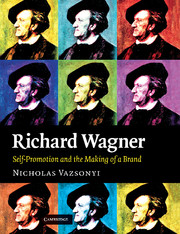4 - Consumers and consumption
Published online by Cambridge University Press: 05 May 2010
Summary
Wagner operas are also about Wagnerian opera. Wagner weaves the principles of his aesthetic theories into the dramatic fiber of the works themselves, so that they both thematize and perform his aesthetics. This suggestion is not new. Already during the first run of the Ring cycle in 1876, the critic Wilhelm Mohr answered Wagner's opponents by explaining that, “the old forms have not been shattered … but rather, just as Siegfried does with the sword Nothung, filed, smelted, recast and newly forged.” Nothung – forged from the fragments of the old sword – is a metaphor for Wagner's Gesamtkunstwerk which unifies modernity's fragmented arts, so misused in opera. In such a reading, Mime stands for Meyerbeer, while Wagner is Siegfried.
Such an approach also applies to Wagner's earlier works. In Tannhäuser, for instance, Venus and Wartburg can function as allegories of voluptuous Parisian Grand Opera versus the aesthetically impoverished German opera of Dresden. The Shepherd in the third scene of Act I occupies a distinct, utopian space reserved for the music drama of the future. Wagner's own analysis of the Lohengrin Prelude suggests that the Holy Grail is nothing other than Wagner's music itself. The Ring has been read as replaying Wagner's version of opera history, a thesis David Levin recently embellished by proposing that Siegmund is guilty of “breaking and entering” into Hunding's (opera) house: an act both figuratively and aesthetically representative of Wagner's project.
- Type
- Chapter
- Information
- Richard WagnerSelf-Promotion and the Making of a Brand, pp. 127 - 168Publisher: Cambridge University PressPrint publication year: 2010



